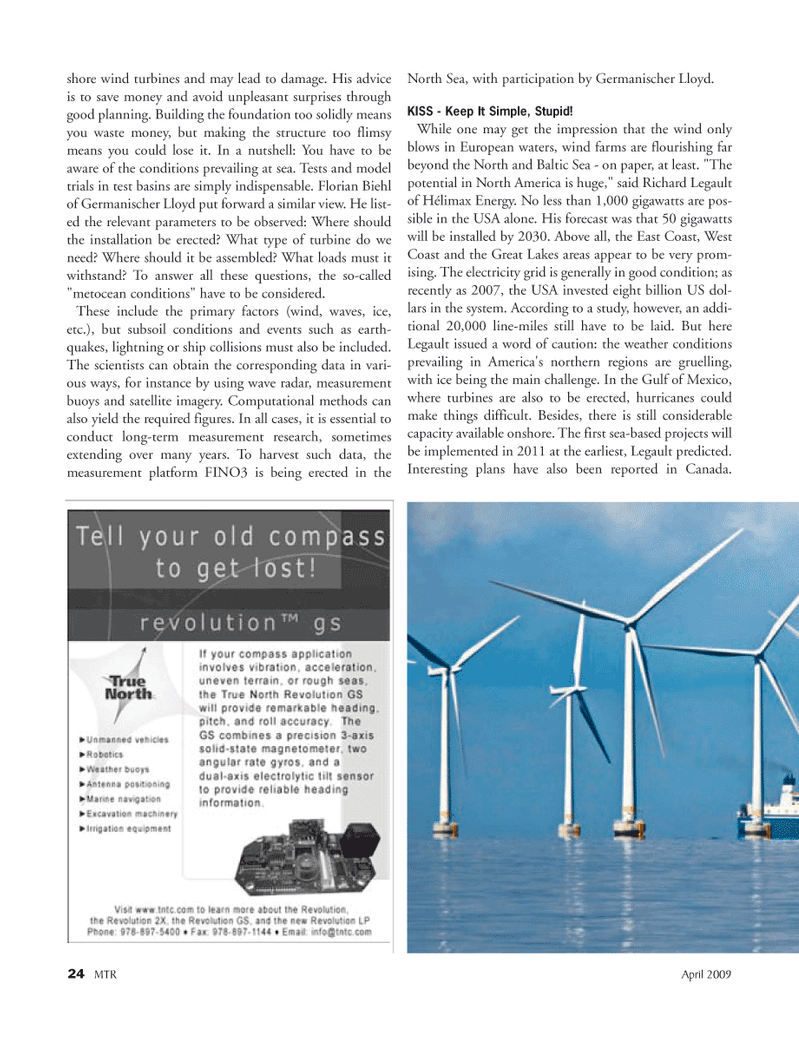
Page 24: of Marine Technology Magazine (April 2005)
Read this page in Pdf, Flash or Html5 edition of April 2005 Marine Technology Magazine
24 MTR April 2009 shore wind turbines and may lead to damage. His advice is to save money and avoid unpleasant surprises through good planning. Building the foundation too solidly means you waste money, but making the structure too flimsy means you could lose it. In a nutshell: You have to be aware of the conditions prevailing at sea. Tests and model trials in test basins are simply indispensable. Florian Biehl of Germanischer Lloyd put forward a similar view. He list- ed the relevant parameters to be observed: Where should the installation be erected? What type of turbine do we need? Where should it be assembled? What loads must it withstand? To answer all these questions, the so-called "metocean conditions" have to be considered.
These include the primary factors (wind, waves, ice, etc.), but subsoil conditions and events such as earth- quakes, lightning or ship collisions must also be included.
The scientists can obtain the corresponding data in vari- ous ways, for instance by using wave radar, measurement buoys and satellite imagery. Computational methods can also yield the required figures. In all cases, it is essential to conduct long-term measurement research, sometimes extending over many years. To harvest such data, the measurement platform FINO3 is being erected in the
North Sea, with participation by Germanischer Lloyd.
KISS - Keep It Simple, Stupid!
While one may get the impression that the wind only blows in European waters, wind farms are flourishing far beyond the North and Baltic Sea - on paper, at least. "The potential in North America is huge," said Richard Legault of Hélimax Energy. No less than 1,000 gigawatts are pos- sible in the USA alone. His forecast was that 50 gigawatts will be installed by 2030. Above all, the East Coast, West
Coast and the Great Lakes areas appear to be very prom- ising. The electricity grid is generally in good condition; as recently as 2007, the USA invested eight billion US dol- lars in the system. According to a study, however, an addi- tional 20,000 line-miles still have to be laid. But here
Legault issued a word of caution: the weather conditions prevailing in America's northern regions are gruelling, with ice being the main challenge. In the Gulf of Mexico, where turbines are also to be erected, hurricanes could make things difficult. Besides, there is still considerable capacity available onshore. The first sea-based projects will be implemented in 2011 at the earliest, Legault predicted.
Interesting plans have also been reported in Canada.
MTR#3 (18-33).qxd 3/27/2009 2:03 PM Page 24

 23
23

 25
25
